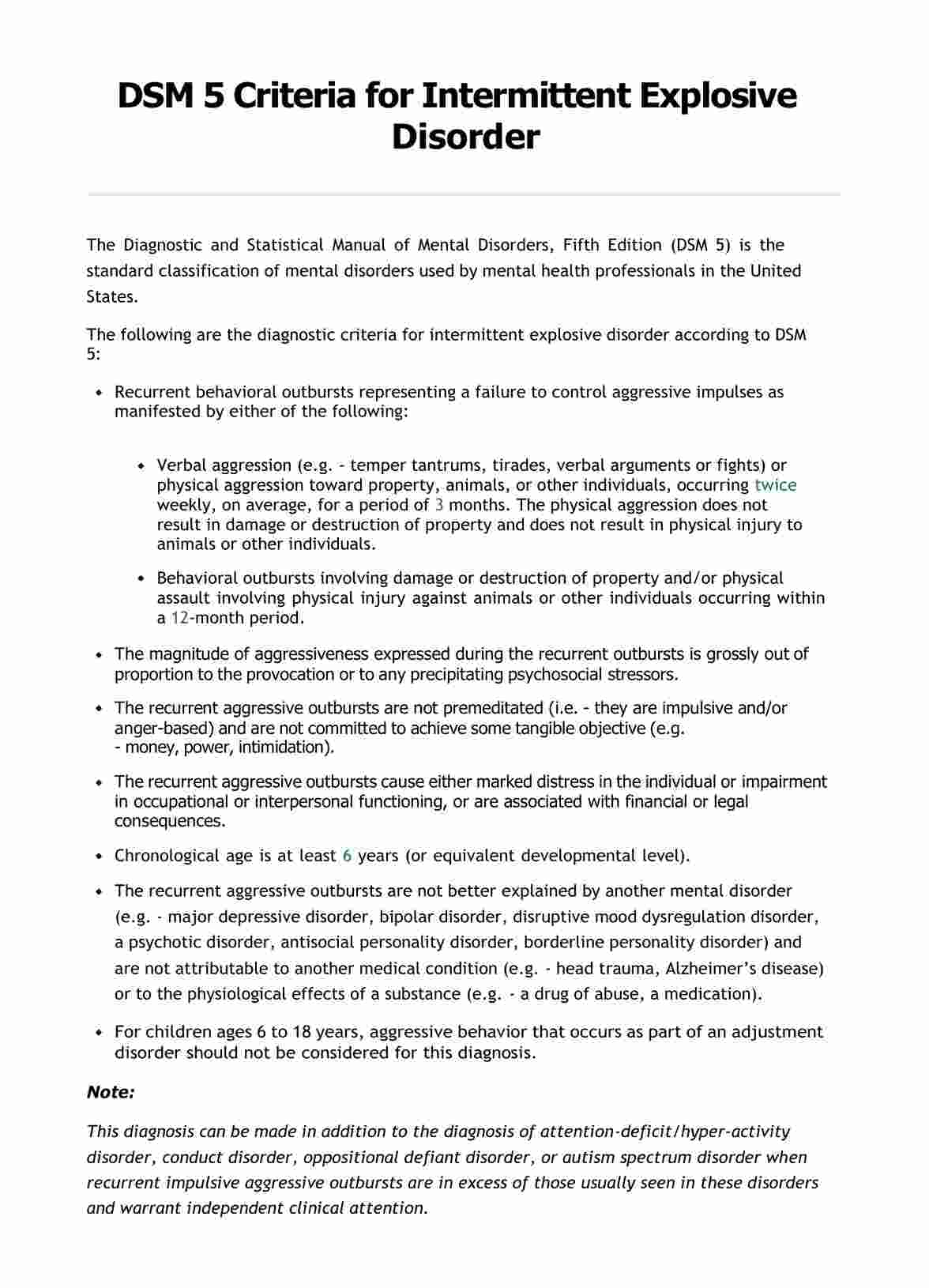Intermittent explosive disorder (IED) is a mental health condition characterized by impulsive and aggressive outbursts that are disproportionate to the situation.

DSM 5 Criteria for Intermittent Explosive Disorder
Learn about the DSM 5 Criteria for Intermittent Explosive Disorder. Download our free PDF guide for your practice.
Use Template
DSM 5 Criteria for Intermittent Explosive Disorder Template
Commonly asked questions
The exact cause of IED is unknown, but it is believed to be a combination of genetic, environmental, and situational factors.
A mental health professional will conduct a thorough evaluation and review of symptoms to determine if the criteria for IED are met, according to the Diagnostic and Statistical Manual of Mental Disorders (DSM 5).
EHR and practice management software
Get started for free
*No credit card required
Free
$0/usd
Unlimited clients
Telehealth
1GB of storage
Client portal text
Automated billing and online payments











